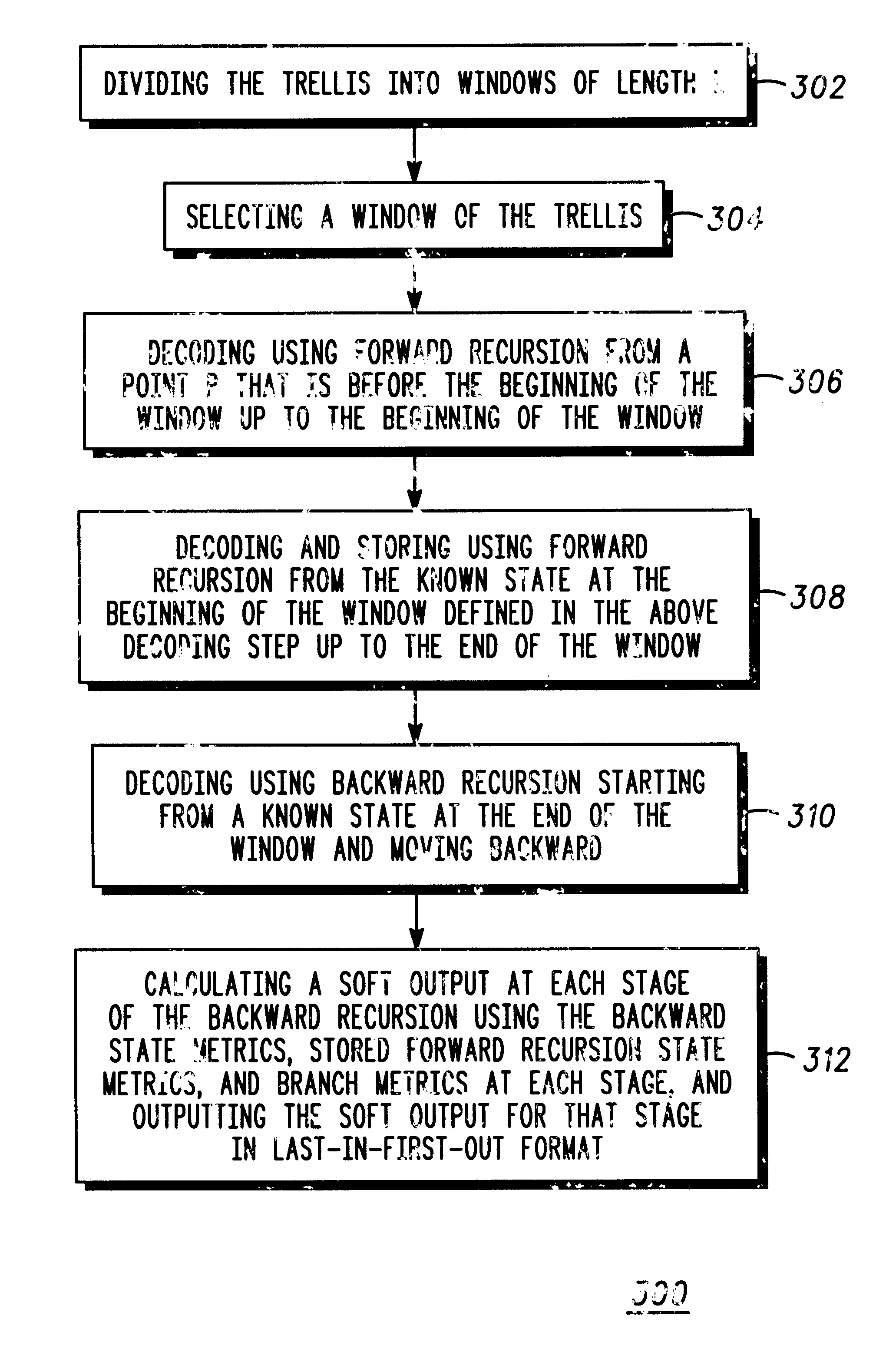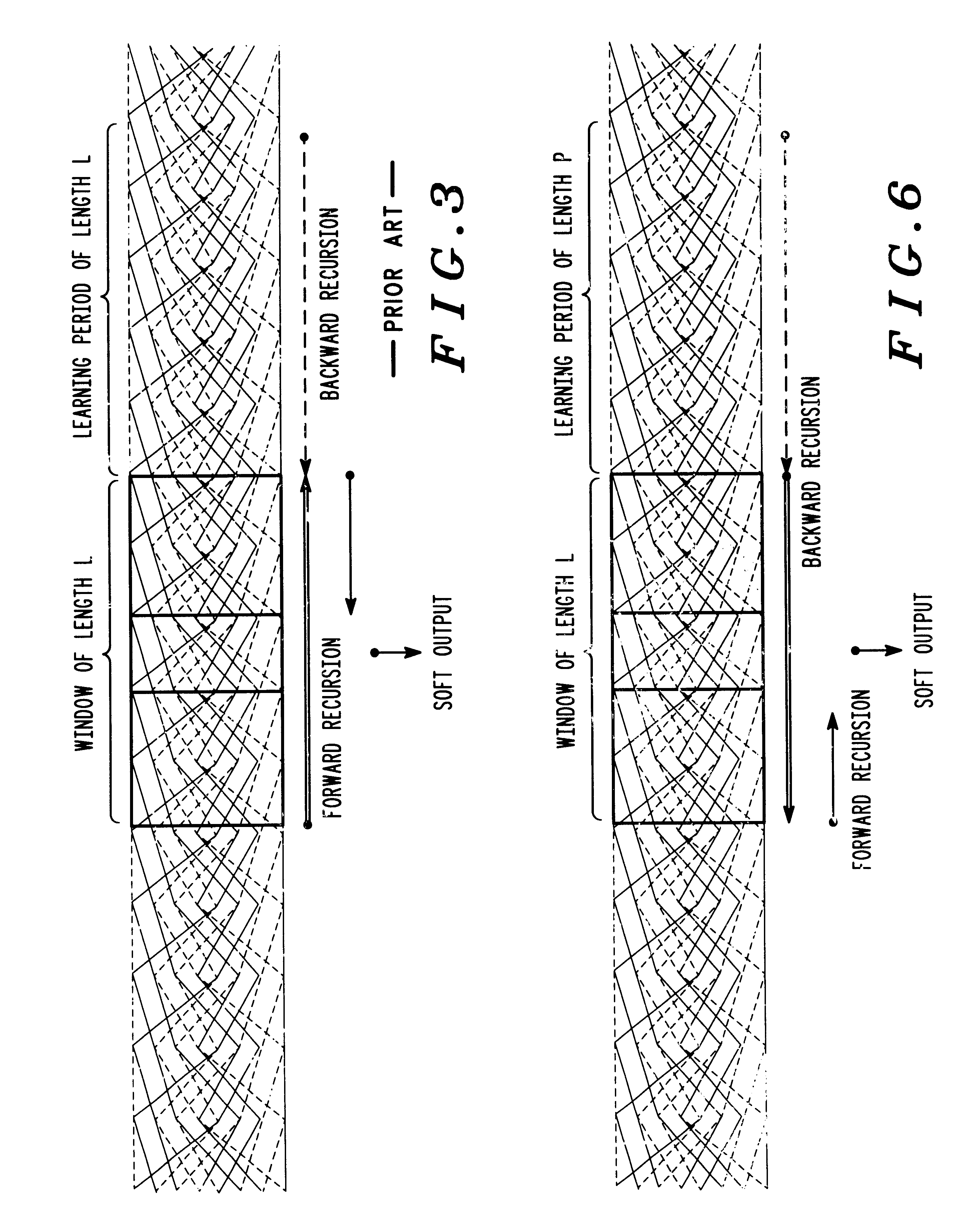Soft output decoder for convolutional codes
a convolutional code and output decoder technology, applied in the field of communication systems, can solve the problems of computational complexity, increased complexity of computational algorithms,
- Summary
- Abstract
- Description
- Claims
- Application Information
AI Technical Summary
Problems solved by technology
Method used
Image
Examples
Embodiment Construction
[0022]The present invention greatly reduces the memory requirement from prior art turbo decoders with only a small increase in computation over a Viterbi decoder. In all, this provides for a more efficient decoder. Moreover, the present invention minimizes the limitations of prior art turbo and MAP decoders.
[0023]Typically, block codes, convolutional codes, turbo codes, and others are graphically represented as a trellis as shown in FIG. 1. Maximum a posteriori type decoders (log-MAP, MAP, max-log-MAP, constant-log-MAP, etc.) utilize forward and backward generalized Viterbi recursions on the trellis in order to provide soft outputs, as is known in the art. The MAP decoder minimizes the decoded bit error probability for each information bit based on all received bits. Typical prior art MAP decoders require a memory for use in decoding.
[0024]Because of the Markov nature of the encoded sequence (wherein previous states cannot affect future states or future output branches), the MAP bit...
PUM
 Login to View More
Login to View More Abstract
Description
Claims
Application Information
 Login to View More
Login to View More - R&D
- Intellectual Property
- Life Sciences
- Materials
- Tech Scout
- Unparalleled Data Quality
- Higher Quality Content
- 60% Fewer Hallucinations
Browse by: Latest US Patents, China's latest patents, Technical Efficacy Thesaurus, Application Domain, Technology Topic, Popular Technical Reports.
© 2025 PatSnap. All rights reserved.Legal|Privacy policy|Modern Slavery Act Transparency Statement|Sitemap|About US| Contact US: help@patsnap.com



